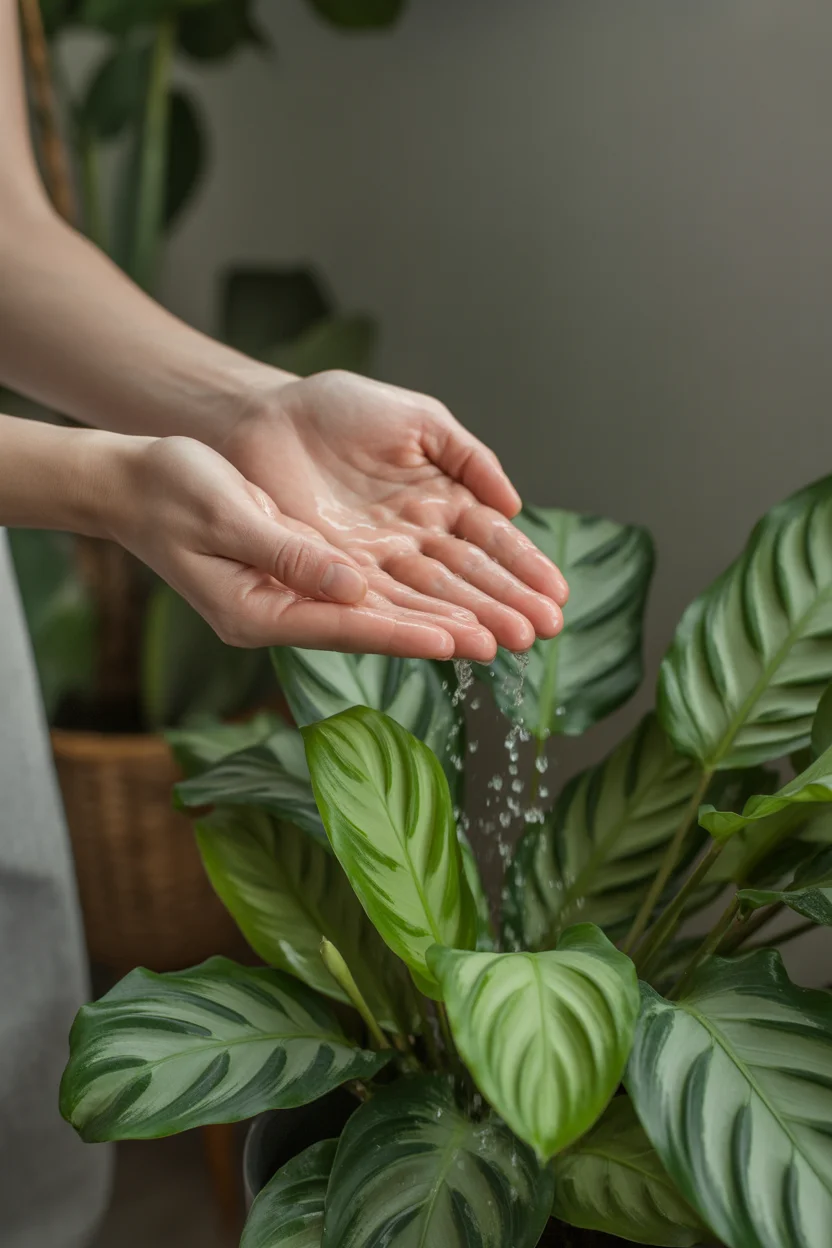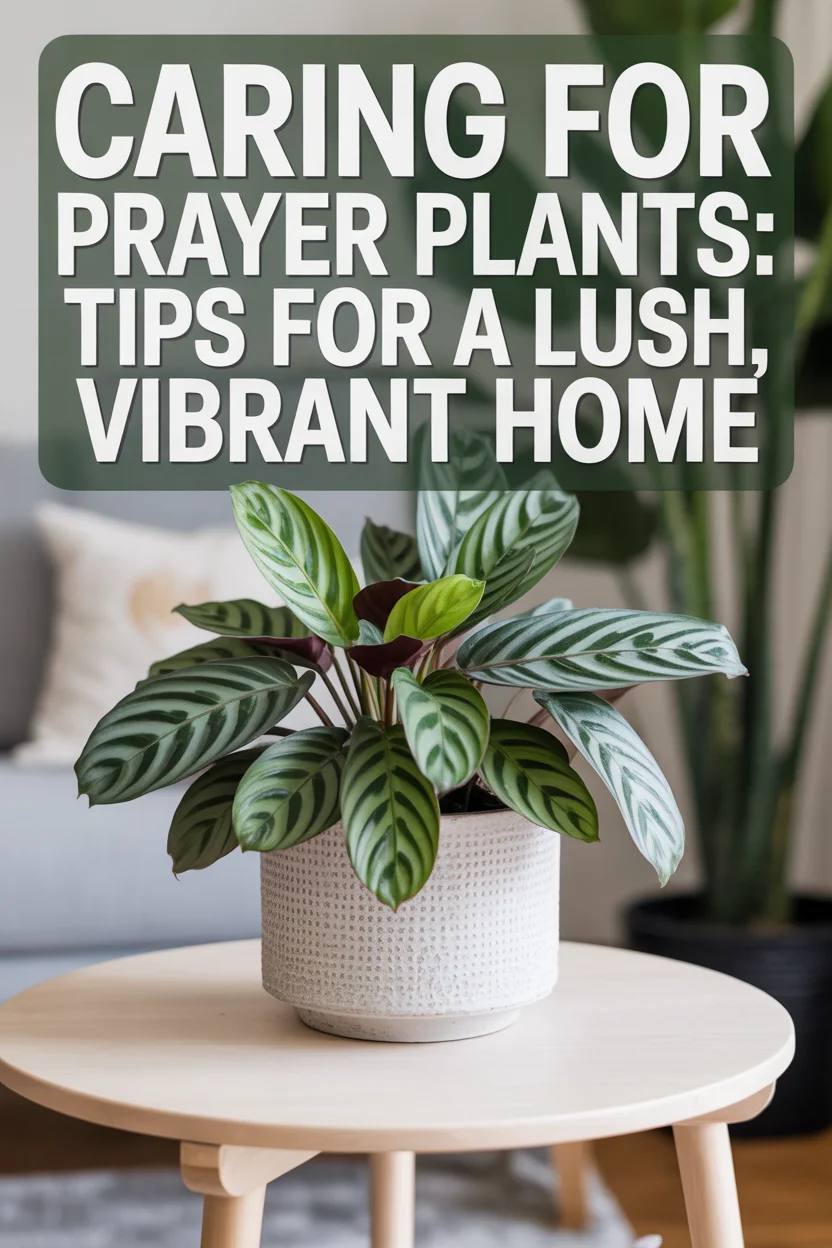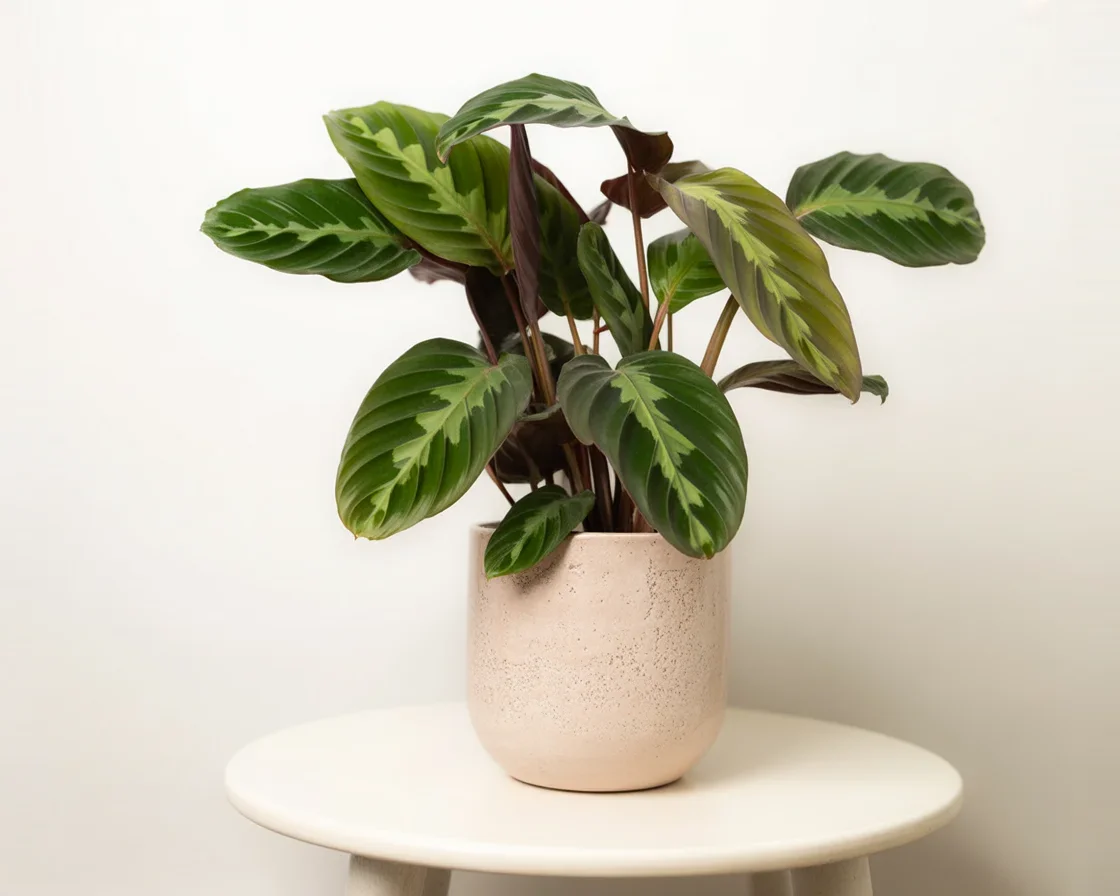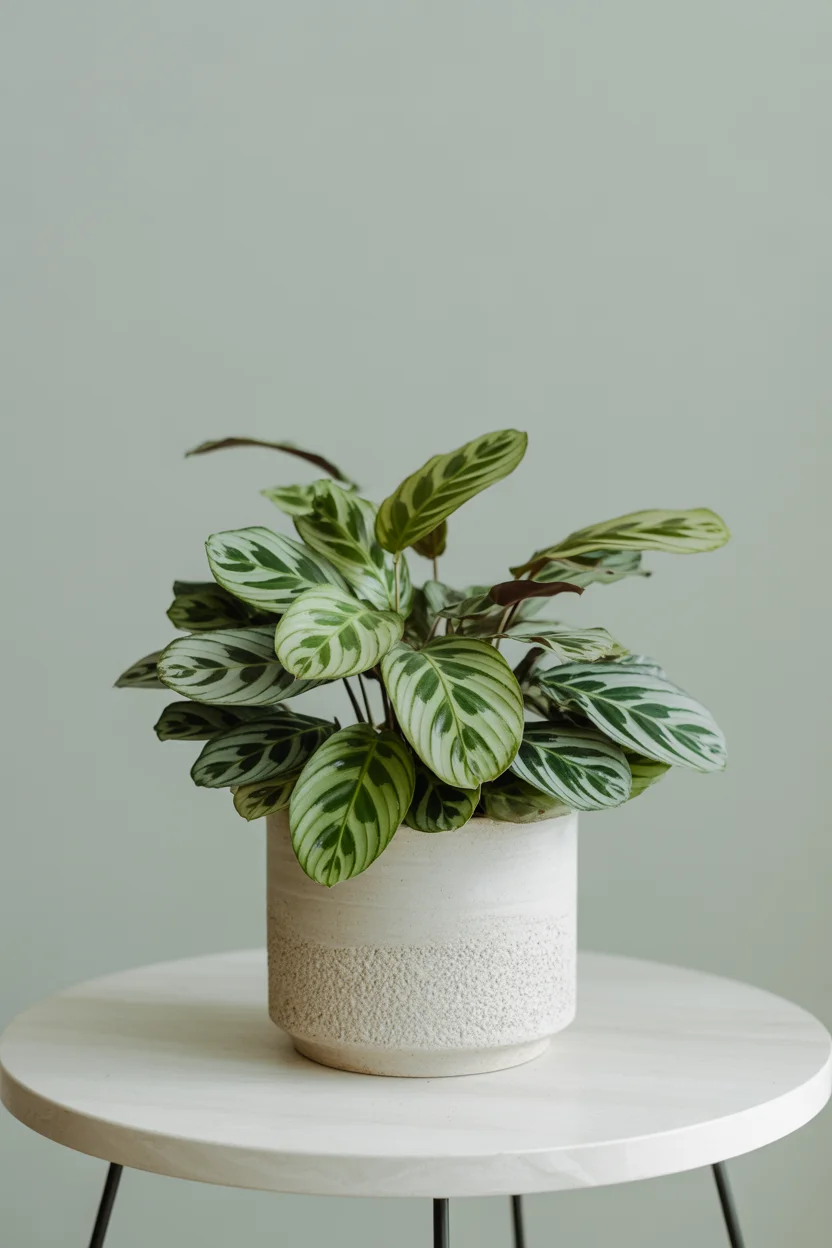Prayer plants – wow, if you’ve ever drooled over those lush, patterned leaves online, you know the feeling. You bring one home, picture it glowing on your coffee table like some five-star restaurant centerpiece, then… it droops. Edges curl, maybe some brown spots. Been there. Prayer plants are one of those popular house plants that look easy, but suddenly you’re googling stuff after midnight. If you love vibrant greens in your living room (I do!), I’ll tell you how to keep them alive and thriving. Trust me, with a few hacks, your prayer plant will outshine any other in your collection or maybe even those featured in 10 Common Indoor Plants That Brighten Your Space or the all-time faves at 10 Must-Have Popular House Plants Everyone Loves.
Table of Contents
Prayer Plant Care
Alright, listen. Prayer plant care isn’t rocket science – but it’s not like ignoring a pothos, either. You want bright, indirect light (never the full sun; I learned this the crispy way). Filtered light keeps the leaves looking top-notch, no drama.
You’ll want the soil kind of like a wrung-out sponge. Not drenched, not dust-bowl dry. Stick your finger in the dirt; if it feels like a damp brownie, you’re golden. Use filtered water if you can, since mine throws a hissy fit if the tap water’s hard.
Humidity? Oh, prayer plants are basically divas. If you don’t have a humidifier, fine. But set them near other moisture-loving plants, or plop the pot on a tray of pebbles with water. Misting helps a bit, but they love a good sauna vibe (Florida in July, anyone?).
Fertilize once a month during spring and summer. Skip winter unless you like sad, burned tips.
One thing – never let it get cold. Drafts, open windows, and chilly spots? Not friends with your Maranta buddy.

Types of Prayer Plants
People say “prayer plant” like there’s one kind. Totally false. There are a bunch, and honestly, some are absolute stunners. My favorite is Maranta leuconeura ‘Erythroneura’ (the “red prayer plant” – those veins look wild). There’s also the classic “green prayer plant,” which is bold but more chill.
Calathea gets lumped together sometimes, though technically it’s a cousin. Calathea ornata and Calathea makoyana? Both bring a ton of personality, if you like dramatic leaves (who doesn’t?).
Take a peek at varieties before buying. Some have silver streaks, some have purple undersides (that’s very cool under lights). Point is, check your plant tags if you want a certain look or want to build your own tropical jungle.

Pruning Prayer Plants
Here’s something I nearly messed up when I started: prayer plants can get scraggly fast if you ignore them. Don’t let them go wild – trim off dead or yellow leaves. You can snip stems just above a leaf node to help them fill out, especially if your plant’s all legs and no fluff.
Honestly, I love taking the scissors to mine; it’s weirdly satisfying. Pruning also helps avoid nasty surprises like bugs hiding in brown leaves. And, the crazy bit, snipping a few stems just means even more new growth. It’s like baking a cake and somehow ending up with two. Just use clean scissors. Your prayer plant will reward you, promise.

Propagating Prayer Plants
Okay, propagation time – maybe my favorite part. You don’t need a greenhouse, just a pair of sharp scissors and some patience. Cut off a healthy stem with at least one node and stick it in water (my grandma used to use an old jar on the windowsill). Roots show up in a few weeks if you keep the water fresh.
You can also stick the cutting straight into moist soil if you’re feeling bold (I usually go water first, just so I can see those roots forming). Once there’s a good root tangle, just pop it into a small pot. New plant! It’s so easy, my aunt who can kill a cactus managed this. If you want other water-loving cuttings, 25 Plants You Can Grow in Water is loaded with ideas.
Oh, a quick tip: keep the cutting warm and humid. I sometimes cover it with a plastic bag like some mini greenhouse. If you mess up a couple, don’t stress it. Plants forgive.
Common Problems with Prayer Plants
Seriously, these plants throw a fit if the conditions slip. Leaves turning yellow or getting brown tips? Usually overwatering or water that’s got lots of minerals. Use filtered or rainwater if you can.
Edges curling or crispy leaves scream “I’m thirsty!” or “Too much sun!” Move your plant closer to the humidifier, or just away from the window. Droopy leaves, meanwhile, can be anything: dry air, cold draft, not enough water, or root rot. I know, not helpful, but check one at a time and you’ll solve it.
Bugs happen. Mealybugs and spider mites love these leaves. I wipe mine with a damp cloth, and sometimes spray a little soapy water. Oh – and if you see gray fuzzy mold? That’s a humidity fail. Time to let the soil dry out a tad.
If you’ve got pets, great news: legit, prayer plants are pet-safe! Want more? Here’s a handy list: 26 Houseplants Safe for Cats and Dogs.
| Problem | Likely Cause | Quick Fix | Pet Safe? |
|---|---|---|---|
| Yellowing leaves | Overwatering or bad water | Less water, filter the water | Yes |
| Brown tips | Dry air or water issues | More humidity, use rainwater | Yes |
| Leaves folding day | Too dry or too much sun | Check placement, water lightly | Yes |
Where is the best place to put a prayer plant?
So, you’re staring at your living room, plant in hand… where’s it go? Easy. Find a spot with bright, indirect light. Morning sun is nice but block afternoon rays – they’re too harsh. North or east windows are my favorite. If you get a tan in the spot, it’s probably too bright for your prayer plant.
Airflow matters, but keep out of icy drafts or direct AC blasts. And, like I said, find a cluster of other plants, as humidity skyrockets go a mile for them. Oh, fun note: prayer plants are perfect for filling darker corners too, since they tolerate a bit less light. Check Corner Plants That Will Liven Up Any Living Room for more ideas.
I even keep one on my bathroom shelf. It loves the steamy air.
Why do prayer plants fold up at night?
This right here is one of my favorite plant quirks. At night, those leaves fold straight up – like hands in prayer. Cute, right? It’s a natural thing called nyctinasty (don’t worry about the name). It helps the plant conserve moisture and maybe dodge nighttime critters. Also, honestly, it just looks cool.
So, if your prayer plant’s leaves are folding up after dark, it isn’t mad at you! That’s just what they do.
How do you take care of a prayer plant?
Alright, let’s keep it simple:
- Keep it in bright, indirect light – harsh sun fries it.
- Water when the top inch of soil feels dry, but don’t let it sit in soggy soil.
- Pump up the humidity – pebble tray, humidifier, or just a group of plants helps.
- Snip off brown, yellow, or leggy leaves for a fuller look.
That’s really most of it. Your plant might throw you curveballs now and then, but with these basics you’ll keep it lush.
Ready to Grow a Lush Prayer Plant?
Prayer plants are pretty easy once you learn their little quirks. Stick to the basics – bright indirect light, some humidity, and gentle care, and you’ll have a show-stopper. Take things slow, pay attention, and don’t worry if you mess up sometimes. Want even more tips? Check out the Prayer Plant: Care & Growing Guide at The Spruce – it’s solid gold for everything I might’ve missed. For more plant inspo, why not peek at different styles, like 10 Purple Plants That Make Your Garden Top or just keep adding to your indoor jungle? Try it! These little prayer plants really do bring new life to any home.
Common Questions
My leaves have brown spots. Is my plant sick?
Usually it’s too dry, too sunny, or hard tap water. Try filtered water and boost humidity.
How often should I repot my prayer plant?
Every 2-3 years is about right, or when roots burst out the bottom. Use fresh, fluffy soil.
Can prayer plants live in low light?
Kinda. They tolerate it, but you’ll get less color. For more low-light plant ideas, check The Best Indoor Plants for Low Light.
Can I use regular potting soil?
Yes, but mix in a bit of perlite or coco coir if it looks heavy. They like soil that drains well.
Are prayer plants safe for pets?
Yup! Totally pet-safe and fine around cats or dogs.

